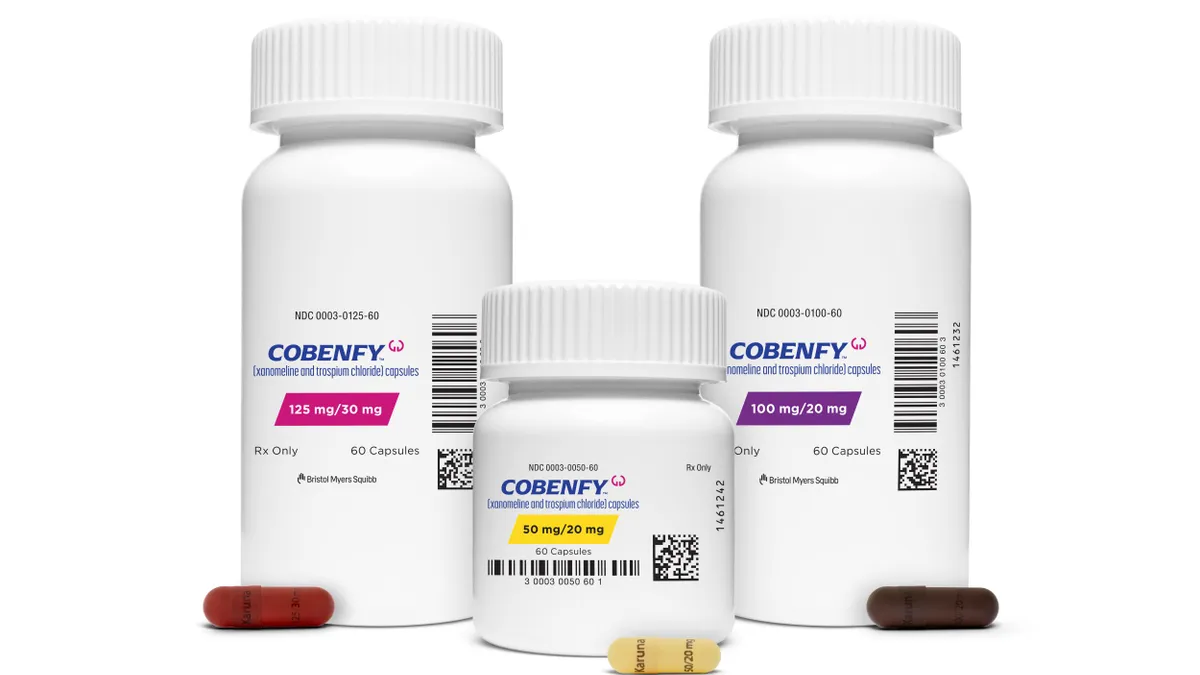The industry is moving fast, and our community of experts weigh in on the top trends they are watching.
Welcome to 2021. This is the first in a series of Trend Tracking updates that we will be publishing throughout the year. Given the current state of, well everything, we decided to highlight the trends that our community of thought leaders are tracking. We encourage you to share your insights as well … just drop us a line, our email is always open.
Virtual Engagement
 Mina Shariq
Mina Shariq
VP, Engagement Strategy
Ogilvy Health
The COVID-19 pandemic has catalyzed a huge shift in the healthcare industry, where a growing digital native population has already been pushing the industry to adopt new technologies to improve the patient experience. In particular, the pandemic has accelerated the demand for virtual health applications; moving them from once being an optional service to now being an essential one.
Creating regular touchpoints with patients is imperative during this uncertain time. Patients are seeking safe, familiar options and have responded positively to communications with their HCPs through phone, email, SMS, and video chat. By optimizing telehealth technology to support communication and care, healthcare providers have been able to maintain or even improve upon the patient experience.
Patients have appreciated quicker response times, more personalized interactions, and the ability to manage and monitor their care from the comfort of their own homes.
The pandemic has also resulted in longer periods of time between patient and physician interactions, which will undoubtedly result in lower patient adherence to therapy. Enter digital therapeutic technologies, which leverage software to prevent or manage conditions as well as monitor side effects. They have been quite effective in supporting patients and increasing therapy adherence and disease management at home. Increased use of e-triage tools will provide patients with support in identifying appropriate care based on their symptoms, as well as secure web portals allowing them 24-hour access to their personal health information. These tools will ease the burden on clinics and can translate to a better overall patient experience.
As health systems implement new virtual health strategies, they must consider the importance of providing a seamless and holistic experience for the patient. For example, these new strategies should integrate information collected from virtual visits with patients’ regular care teams into one, easily, accessible electronic health record.
Numerous surveys conducted this year have highlighted that healthcare professionals much prefer in-person conversations with the pharmaceutical salesforce. Since this is not currently an option (and predicted not likely to be for some time to come), it is important to consider that virtual communications may not be meeting physicians’ digital expectations. HCPs mention wanting pharmaceutical reps to have a better understanding of both their and their patient’s needs. Often constrained for time, they have reported being fatigued from seeing the same information over and over again. This has created the need for engaging content that is delivered to HCPs in a way they prefer to learn.
Finding a new, creative way to showcase e-detail messaging over remote channels, with more meaningful data presentation, could result in higher-quality conversations. Using video platforms such as Skype, Zoom, or eRep enables real-time conversations. These platforms also offer the opportunity to record videos to allow HCPs to access information at a time that is convenient for them, offering a more overall engaging experience.
With face-to-face interactions being limited, now is also the perfect time to optimize non-personal promotion. Most physicians are keen to stay in the know about industry happenings and remain open to receiving useful messages from reps. As such, it is important to ensure CRM campaigns and email communications are working as hard as they can with segmentation and personalization. Websites need to be informative and user-friendly and brands must ensure social media is built into the wider engagement strategy.
The reality is, in the next five years the majority of baby boomer HCPs will have retired and been replaced by millennials. Digital and virtual engagement across the entire healthcare ecosystem is expected to become increasingly integral to success, as this demographic prefers remote, mobile, and multichannel engagement.
With technology playing such a key role in adapting to the COVID-19 new normal and beyond, I expect to see a sustained increase in on-demand virtual care, greater reliance on tech-enabled home medication administration, and an uptick in the use of augmented and virtual realities in medical education.
Redefining Care Pathways
 Fred Bassett
Fred Bassett
Head of Consulting
Fishawack Health
COVID-19 has forced the life-sciences industry to transform its approach to stakeholder engagement. Reduced access to care has changed every care pathway and a number of these will be altered permanently. The pharmaceutical industry needs to consider how the re-defining of care pathways will lead to new challenges in engagement and new areas to add value. With the rise in use of telehealth portals, virtual engagements between patients and physicians have become the norm. Patient expectations are higher than ever. They are used to receiving a seamless digital customer experience in every other aspect of their lives, from online shopping to ordering a taxi. At a minimum, they expect the same level of customer experience when it comes to the most important aspect of their lives — their health and the health of their loved ones.
The pandemic has shown us all that remote care is possible. Now, life sciences companies have the opportunity to develop innovative solutions that improve the customer treatment experience. However, these solutions must be seamless and based on an understanding of the patient journey, including barriers, pain points, and gaps.
Even though face-to-face access with healthcare professionals has ceased, they have revealed they would like to continue communicating with sales reps virtually. This means that we are now in a world where there is a greater permission-based interaction between the salesforce and physicians. There will be intense competition for the physician’s attention as communications flood their inboxes, so to maintain virtual access to their customers, the salesforces need to add value in every interaction. In a virtual world, there are numerous opportunities to develop innovative resources, identify novel service opportunities, and create targeted and measurable strategies that increase the relevance of interactions. Salesforces will need to be upskilled and trained to engage customers and add value in the digital world.
The future will not be purely digital. There is still a desire to meet face to face, whether that means a doctor seeing a patient or a sales rep visiting a healthcare professional. However, we will continue to see a rise in digital solutions that enhance the stakeholder journey. Pharma has a huge opportunity to map this journey and develop solutions that add real value, improving the relationship between the patient and healthcare professional, and improving outcomes.
Decentralized Clinical Trials
 Donna Hanson
Donna Hanson
Corporate Development
Advanced Clinical
There are many benefits of decentralized trials: automation, operational efficiency, integrated data insights, etc. One of the greatest benefits is patient-centric focus, making it easier for patients to participate regardless of traditional barriers like location, access to healthcare, and lack of access to trials. Patients have experienced a new version of healthcare during COVID-19; with much of their “routine" experience going virtual, this same experience can make trial participation less burdensome. Structuring the trial experience in a manner conducive to a patient’s routine lifestyle allows for deeper reach into patient pools, ultimately closing studies earlier and bringing products to market faster. While the clinical trial industry has historically been conservative to adopt new approaches, COVID-19 pushed all to a point of speed and innovation. The decentralized momentum will continue as routine healthcare and patient desire to maintain a new version of normal is here to stay.
While COVID-19 pushed most trials to some degree of DCT, barriers remain in structuring new trials to a hybrid/DCT approach. Significant barriers include organizational buy-in, a streamlined operational strategy and a desire to get back to “normal." COVID-19 forced late adopters to a point of hybrid out of necessity to maintain conduct of their trials, and it is critical our industry does not slip back into what was seemingly the comfort zone to bring medicine to the market faster. Not all trials can be fully decentralized. However, a hybrid approach can substantially benefit all stakeholders: sponsors, CROs, vendor partners, sites, and patients. Sites continue to be heavily impacted by COVID, and the way they care for patients and conduct trials has been forever changed. It is necessary to engage sites early in decentralized planning to reduce operational barriers in adopting new strategies down the road. Sites operationalize decentralized/hybrid trials across many products, sponsors, CROs, vendors, etc. and are often eager to share successes, hurdles and best practices. Now is our industry’s opportunity to prepare the operational plans our teams need and advance our decentralized toolbox.
Many patients, caregivers, and families do not consider clinical trials as a care option because of perception and/or lack of knowledge of their options. The mainstream narrative of clinical trials is painted both positively and negatively. While patients with advanced or life-threatening illnesses likely consider trial options, the public is not at a place in which trials are a top-of-mind care option. The decentralized trial model can help promote clinical trials as a care option, innately because they are designed with a patient-first mindset. When something is designed to cater or provide a concierge-level approach, it is more easily adopted as a viable option. Designing a clinical trial that is less intrusive and integrates into routine habits will shine a positive spotlight on clinical trials as a care option. Patients are accustomed to social media platforms, completing online questionnaires, signing electronic consents, etc. in other aspects of their lives. Shifting to this native way of consumerism and integrating these pathways can elevate trials into a more routinely considered care option than current occurrences.
Unlocking the Benefits of RWE
 Steve Galt
Steve Galt
Head of Client Services
Fishawack Health
We’re interested in unlocking the benefits of RWE for small patient populations. Often it is challenging to develop a randomized clinical trial for orphan therapies because of the small sample size and the difficulties in defining standard of care or, in the case of life limiting diseases, it’s unethical to include one. However, a number of issues are impacting the translation of RWE into clinical practice. Firstly, patients must be active collaborators in the collection of data long term and it must be clear on how the data will be used and kept private. They also need to understand how to collect information properly when using apps and wearables or engaging in other forms of self-monitoring. Secondly, clinicians must have access to education and tools to make sense of the data that is generated in order to interpret and then assess how to adapt their clinical practice.
Overcoming these barriers is essential for ensuring patients can truly benefit from RWE. Strong integrated evidence generation helps to identify data knowledge gaps and ensure the appropriate study approach is used.
Life-sciences companies have the opportunity to not only ensure they establish trust with the community in their RWE programs, but to also become future-focused in thinking about the tools and resources that make the stakeholder experience far more engaging.
Here it is essential for evidence generation teams to partner with brand teams early on to ensure RWE answers core clinical questions that support appropriate clinical use of the product. By doing so, they can optimize stakeholders’ experiences and translate the benefits of RWE to have a meaningful impact on patient management in rare diseases.
Digitization of Commercial Activities
 David Ormesher
David Ormesher
CEO
closerlook inc.
The biggest trend I’m tracking is the widespread adoption of digital for all commercialization activities in 2021 and beyond. Previously, digital marketing often was seen as simply another channel or a line item in a brand’s annual budget.
COVID-19 was a wake-up call. Product teams are finally recognizing that everything they do should begin with digital and be informed by data analytics. This trend has the potential to transform how commercialization is conceived and activated.
What does this mean in practical terms? If one is sincere about being customer-centric, then the starting point of any clinical or product communication must begin with recognizing that the patient journey and the adoption path for healthcare professionals (HCPs) are paved with digital. Patients, caregivers, and clinicians spend a good deal of time consuming everyday content on digital screens; that’s where we should meet them with clinical content too.
Content will be developed for digital modalities in the first place, not repurposed from traditional platforms. Campaigns will be conceptualized as omnichannel from the beginning, with data analytics recommending changes while tactics are still inflight.
Data science will be engaged to develop predictive models that learn over time. As a result, HCPs and patients will receive content that is relevant and personalized, leading to increased engagement. What will be the end result? Better health outcomes for patients and greater business results for the brands that serve them.
RWE and Commercial Success
 Iyiola Obayomi
Iyiola Obayomi
Marketing Analytics Practice Lead
Ogilvy Health
As healthcare marketers, we look to RWE with its capacity to enable the commercial and clinical success of our clients. Currently, our RWD and RWE capabilities enhancements can be distilled down to the following three areas: richer data access, analysis enhancement, and consultation.
Data collection can be described in the form of in-market brand communications interactions and engagement, HCP and patient perceptions, and dialogue data, as well as prescription, claims, and EHR data sets. We are growing our insights extraction capabilities to turn RWD into RWE with AI and advanced quantitative techniques, lexical analysis, and linguistics analytics. We are expanding on RWE consultation offerings with resident experts who have deep scientific and statistical skills; these professionals are helping our clients generate hypotheses for consideration to commercial teams and providing suggestions to clinical colleagues.
We have invested in and continue to evolve our RWE products, such as our MTD (managing the dialogue) offering that captures and analyzes our HCP-patient dialogue, our Lexical Analysis offering, which conducts meta-analysis of massive clinical/medical studies, textual mining, analysis of anonymized patient voice/dialogue, and our Exploratory Encounters analysis, which analyzes longitudinal anonymized RWD datasets in the form of HCP and patient encounters.
The FDA’s continued exploration of new ways of using RWE to support and identify new indications has been a significant boost to this trend.
RWD and RWE hold big promises in the healthcare arena, many of which are materializing as I write this. One of the biggest benefits manifested through improved R&D commercial success of manufacturers is better population health outcomes. But the benefits along the value pathway are equally notable.
For R&D, RWD and the derived RWE can open up potential to lower the expense of costly clinical trials, improve targeted recruitment, and better population participation or representativeness. RWE can also speed up the “go/no-go decisions" which, in turn, reduce the development-to-commercialization time frame. It can highlight and improve the understanding of longer-term effects that could be deemed impossible or too costly on long-term trials. In situations when the RW dataset is robust enough, it can serve as a potentially predictive tool of individualized possible outcomes, enabling some form of medical and interventional personalization. RWE benefits the R&D post-clinical studies by providing in-field clinical feedback that can speed up identification of new side-effect profiles, as well as their scope and nature.
For commercial success, RWE can provide evidence to support formulary decisions that most payers now demand. RWD can improve the understanding of overall cost burden, utilization and value, and overall health outcomes. They can provide the basis for evaluation, measurement, and benchmarking of quality purposes. It’s an increasingly major component of post-market surveillance where safety, effectiveness, and cost are critical factors. This can sometimes reveal off-label uses, which in turn can help with label updates and expansion into new indications for a brand. The expanded indication for Ibrance to treat male breast cancer was approved in large part due to RWE.
RWD and RWE can be used in the marketing and advertising realm, too. They can help identify the right messages, images, calls-to-action, and support programs to motivate the right behaviors. Insights from patient behavior can provide a better understanding of adherence and retention patterns, thereby helping to identify interventions, communications, and the support needed for particularly susceptible populations.
R&D can be an expensive endeavor, possibly leading to commercial dead ends. A Deloitte and GlobalData study found that the cost of bringing assets to market has almost doubled in the past decade while revenue peak of brands were half of what they used to be. RWE can significantly tilt the scale in favor of R&D success by increasing the effectiveness and efficiency along the R&D continuum.
How? RWE can reveal new and unmet needs, as well as promising candidates for intervention. We are still learning about COVID-19, but the aggregated patient data evidence has enhanced our understanding in areas including incidence rates across different populations, response patterns to available treatments, emerging comorbidities, and new syndromes that require additional interventions.
In the study design stage, RWE has the potential to help hone the studies’ exclusion and inclusion criteria. This can increase study scale and reduce cost. It can supplement study design data through the creation of control groups or external comparator arms of the trial studies. There are some situations where randomized trials might be very challenging, but RWE may well provide solid statistical and scientific footing for trials to proceed.
Patient recruitment is one of the most challenging aspects of R&D. According to a Perspective in Clinical Research report, more than 55% of clinical trials are halted or delayed because of recruitment challenges. The knowledge of incidence clusters, integrated with include/exclude criteria, can identify and target patients and locate recruitment sites as well as primary investigators. Social economic status, education, and ethnicity do often impact clinical trials, RWE can improve patient representativeness given the broader data augmentation it can provide.
In addition to enhancing the design and recruitment, the results of trials can be further explored and developed with RWE. The evidence can supplement clinical outcomes data using patient-reported information. Facts collected from the field can also help with titration and guideline development or evolution of trials.
AI Adoption
 Dr. Ed Ikeguchi
Dr. Ed Ikeguchi
CEO
AiCure
As the pharmaceutical industry faces intensifying pressure to optimize trials, adherence and precise dosing are critical to achieving an accurate assessment of a treatment’s efficacy as quickly and safely as possible. But assuring adherence is far easier said than done. Many trial sponsors need to increase the size of study populations by 15% to reduce the impact non-adherence has on a drug’s statistical relevance, requiring longer and more expensive trials. Employing AI-powered solutions that help detect non-adherence, and ensure the right dose is being taken at the right time by the right patient, will play a critical role in cutting costs and lead to leaner, more accurate trials in the future.
Even before a trial begins, AI solutions can help recruit the right patients, relying on robust datasets to identify those who are/are not most likely to adhere to the study care plan and predict a cohort’s success throughout the life of the study. Once the pool is set, AI can help retain and engage these patients, helping to ensure they stay on track. By monitoring each dosing through features like facial and voice recognition via one’s smartphone, AI can help confirm that the correct dosage is always taken, transmit this data in real time to the study team, and give them the actionable insights needed to proactively intervene.
Now that in-person visits are less frequent, this visibility into patient behavior between clinical visits is critical and helps sites allocate resources accordingly to offer support for those who are struggling to stick to their care plan. Using patient-centered technology powered by AI can lead to more reliable patient populations and potentially shorter, more streamlined trials, which could not only lead to cost savings but also help bring life-saving drugs to patients faster.
Running and managing successful clinical trials, at the most basic level, is about creating a foundation to get the best possible data. One of the biggest opportunities for AI is to ensure data validity by lowering intentional non-adherence. A study conducted by AiCure and Tufts’ Center for Drug Development found that 48% of all study volunteers had at least one intentionally non-adherent dose, and volunteers who deliberately chose not to take their first dose had an average intentional non-adherence rate five times higher than those who were adherent in the beginning. AI solutions that help weed out and eliminate intentionally non-adherent participants early — particularly within the trial’s first week — can not only accelerate the duration of trials, but also cut costs and retain the integrity of trial data.
AI’s potential also lies in its ability to power successful, meaningful virtual clinical trials that allow sites to detect subtle changes in a patient’s condition. While this virtual format was particularly important during stay-at-home orders in response to COVID-19, many of these remote practices will stick — the odds that the industry will return entirely to trial designs heavily reliant on in-person clinical visits seems low. But sites need to ensure patients receive the same level (if not more) of visibility, communication, and support as an in-person trial, and use technology that patients already have at their disposal.
Out of sight does not need to mean out of mind, and AI-powered monitoring techniques, such as capturing digital biomarkers to pinpoint subtle visual and auditory responses to medication and measure behavioral trends can help maintain the human touch as much as possible. This allows pharma companies to preserve the integrity of their trial, enhance patient safety, and improve patient compliance.
The success and long-term adoption of AI comes down to two important factors: a strong data backbone, and adjusting workflows to fully integrate these solutions.
AI algorithms are only as strong as the data they are fed and how they are applied. When algorithms are not exercised rigorously with multiple variables, or deployed appropriately according to their maturity, their data backbones will be forever weak. Vendors need to work closely with pharmaceutical companies to take reasonable, practical approaches to deployment, such as piloting AI technology for specific use cases.
We need to get back to basics to not only demonstrate how AI can be deployed practically on a small scale, but also give algorithms the fuel they need to mature and ultimately have a deeper impact. If we walk before we run, more people will be exposed to both AI’s benefits and limitations, helping us to effectively escape AI’s hype cycle.
But AI and data are not enough. Workflows and processes will have to change to fully capitalize on the new information these solutions offer, or else they will never fully integrate into workstreams and truly inform patient care and trial outcomes. For AI adoption to accelerate, the workflows and processes we use have to change. For example, when we enroll patients in a clinical trial, we follow a very tried and true process, with people doing specific jobs.
When AI is introduced to predictively assess who would be optimal candidates for a study, the roles and responsibilities of the study team change. Or, when using AI to assess patients using digital biomarkers, the physicians or site staff will have to amend their in-person assessments to include this digital biomarker data, changing how they react to and measure patient responses.
Bridging Clinical Sciences with Engineering Sciences
 Sagar Anisingaraju
Sagar Anisingaraju
Chief Strategy Officer
Saama Technologies
The pandemic drove purpose, urgency, and collaboration across the life sciences industry, technology providers, and regulators. With millions of lives at stake, this collaboration proved that slingshotting drug development from years to months is feasible, albeit on a limited scale. The scientific learnings of this year must be accelerated with robust engineering in the post-pandemic world.
A new category of purpose-built infrastructure must emerge to bring sustainable transformation. Saama calls it Intelligent Clinical Cloud, a platform for clinical sciences to achieve scale, acceleration, and repeatability across therapeutic areas. Under this paradigm, we will see smart research, smart apps, and more importantly smart outcomes.
Integrating clinical and engineering sciences is no longer a strategic plan but a necessity. Intelligent Clinical Cloud is the bridge.(PV)



















